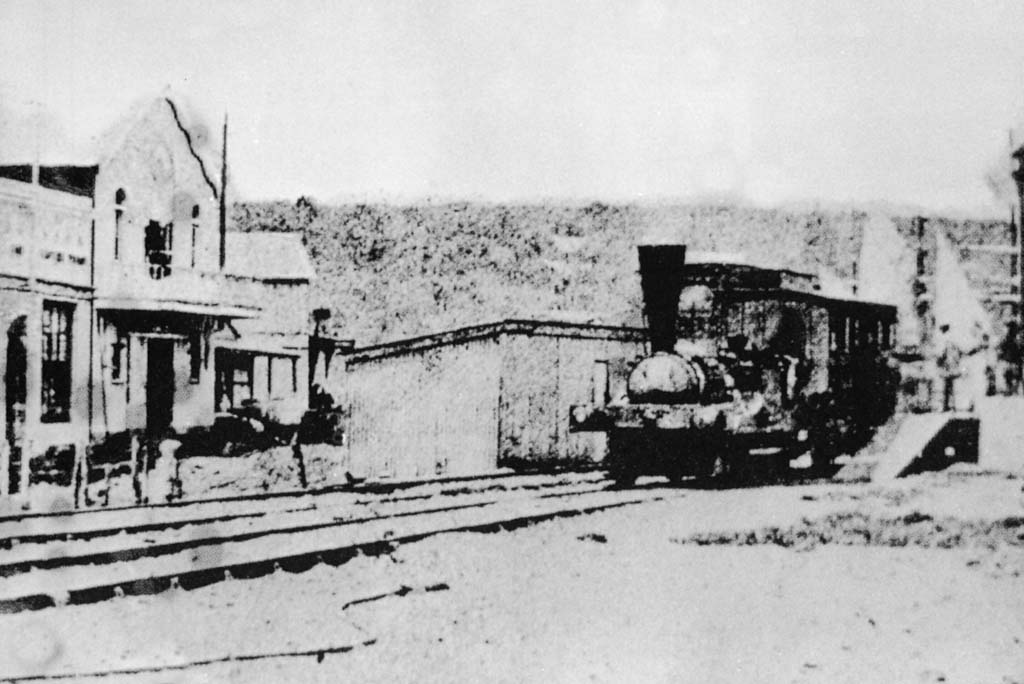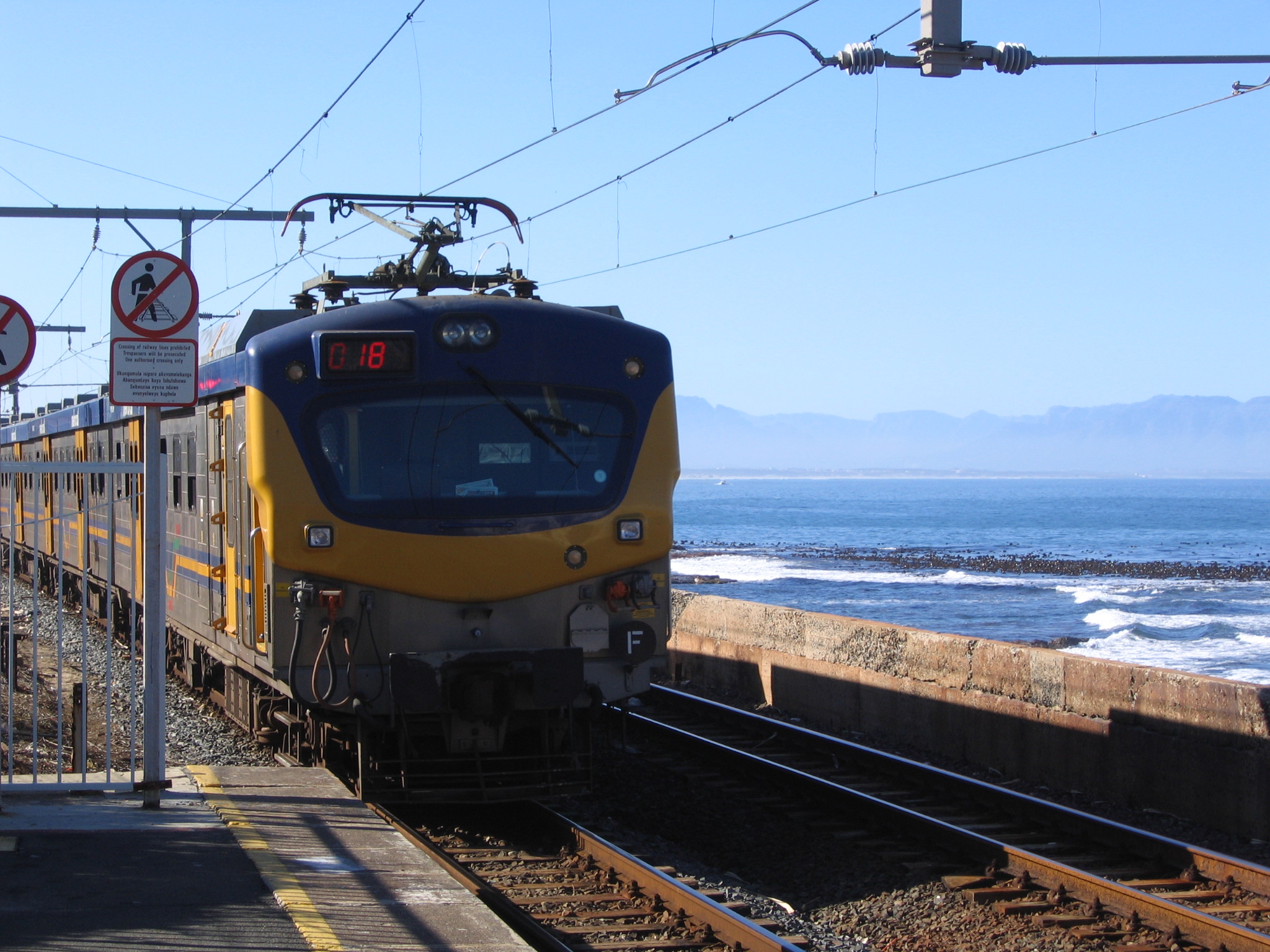|
Natal Railway Company
The Natal Railway Company was formed in January 1859 for the construction of a railway in Durban. The Natal Railway Company made use of broad gauge. The was only adopted in Natal in 1876 when the Natal Government Railways was established. The railway's first steam locomotive, the ''Natal'', started operations on 26 June 1860. Up until that time the railway had been operated using ox-drawn wagons. The inaugural run was across a stretch from Market Square in Durban to the newly built Point station at Durban harbour.Steam Locomotives of the South African Railways, vol 1: 1859-1910, (D.F. Holland, 1971), p11, 20-21, Alexander McArthur, the mayor of Durban described the new line in a letter to Sir George Grey. The Natal Railway Company's initial rolling stock consisted of six wagons, two travelling cranes and one passenger coach. By 25 January 1867 the line had been extended a further to Umgeni, from where stone, quarried from the Umgeni River, was transported to the harbour ... [...More Info...] [...Related Items...] OR: [Wikipedia] [Google] [Baidu] |
Durban
Durban ( ) ( zu, eThekwini, from meaning 'the port' also called zu, eZibubulungwini for the mountain range that terminates in the area), nicknamed ''Durbs'',Ishani ChettyCity nicknames in SA and across the worldArticle on ''news24.com'' from 25 October 2017. Retrieved 2021-03-05.The names and the naming of Durban Website ''natalia.org.za'' (pdf). Retrieved 2021-03-05. is the third most populous city in after and |
Natal Government Railways
The Natal Government Railways (NGR) was formed in January 1877 in the Colony of Natal. In 1877, the Natal Government Railways acquired the Natal Railway Company for the sum of £40,000, gaining the line from the Point to Durban and from Durban to Umgeni. This move, inspired in part by the neighbouring Cape Prime Minister John Molteno's 1873 establishment of the Cape Government Railways, was intended to drive the extension of Natal's railways inland, towards the Drakensberg and eventually the Orange Free State. The Natal Government Railways also adopted the Cape gauge. The core line went from Durban to Volksrust, but reached Charlestown ( from the border of the South African Republic) in 1891 and was linked to the Witwatersrand in 1895. Other important lines were the one linking with the Orange Free State reaching Harrismith in 1892, as well as the North Coast and South Coast lines. In 1910, the Union of South Africa was formed and in 1912 the NGR combined with the other colonies ... [...More Info...] [...Related Items...] OR: [Wikipedia] [Google] [Baidu] |
South African "Natal" 0-4-0WT
The Natal Railway ''Natal'' of 1860 was a South African steam locomotive from the pre-Union era in the Natal Colony. The first locomotive to run in revenue service in South Africa, the Natal Railway Company's engine ''Natal'', was landed at Durban Harbour on 13 May 1860. It made its inaugural run on 26 June 1860, during the official opening of the first operating railway in South Africa.Espitalier, T.J.; Day, W.A.J. (1943). ''The Locomotive in South Africa - A Brief History of Railway Development. Chapter I - The Period of the 4 ft. 8½ in. Gauge''. South African Railways and Harbours Magazine, June 1943. pp. 437-440. The locomotive ''Natal'' The first revenue-earning railway service in South Africa commenced in Durban in the Colony of Natal on 26 June 1860. The train was hauled by a small broad gauge well-tank engine named ''Natal'', which was landed at Durban Harbour off the brig ''Cadiz'' on 13 May 1860. The engine arrived stripped down and was erected by Henry Jacobs, eng ... [...More Info...] [...Related Items...] OR: [Wikipedia] [Google] [Baidu] |
List Of Mayors Of Durban
Below is a list of mayors of Durban, South Africa. In 2000 Durban became the seat of the newly created eThekwini Metropolitan Municipality. 1854-1910 * , 1854–1856 (Includes portraits of mayors) * Edward Snell, 1856, 1867–69 * Savery Pinsent, 1856–57, 1859 * A W Evans, 1857–58 * J R Goodricke, 1857–59 * William Hartley, 1859–60 * Alexander McArthur, 1860–63 * Hugh Gillespie, 1863–65 * John Hunt and R W Tyzack, 1865–66 * Arthur Harvey and John Miller, 1866–67 * William Field, 1869–70 * J D Ballance, 1870 * William Palmer, 1871–72 * John Goodliffe, 1872–73 * Edward Pickering, 1873–74, 1882–83 * Richard Vause, 1870–71, 1874–75, 1878–79, 1883–85 * B W Greenacre, 1875–76, 1889–92, 1897–98 * William Arbuckle, 1876–78, 1880–82 * H W Currie, 1879–80 * J W Stranack, 1885–86 * W E Robarts, 1886–87 * T A O'Flaherty, R L Cunningham, 1887–88 * J J Hillier, 1887–89 * A W Leuchars, 1892–93 * George Payne, 1893–95, 1896� ... [...More Info...] [...Related Items...] OR: [Wikipedia] [Google] [Baidu] |
George Grey
Sir George Grey, KCB (14 April 1812 – 19 September 1898) was a British soldier, explorer, colonial administrator and writer. He served in a succession of governing positions: Governor of South Australia, twice Governor of New Zealand, Governor of Cape Colony, and the 11th premier of New Zealand. He played a key role in the colonisation of New Zealand, and both the purchase and annexation Annexation (Latin ''ad'', to, and ''nexus'', joining), in international law, is the forcible acquisition of one state's territory by another state, usually following military occupation of the territory. It is generally held to be an illegal act ... of Māori land. Grey was born in Lisbon, Portugal, just a few days after his father, Lieutenant-Colonel George Grey was killed at the Siege of Badajoz (1812), Battle of Badajoz in Spain. He was educated in England. After military service (1829–37) and two explorations in Western Australia (1837–39), Grey became Governor of History o ... [...More Info...] [...Related Items...] OR: [Wikipedia] [Google] [Baidu] |
Umgeni River
The Umgeni River or Mgeni River ( zu, uMngeni) is a river in KwaZulu-Natal, South Africa. It rises in the "Dargle" in the KZN Midlands, and its mouth is at Durban, some distance north of Durban's natural harbour. The name is taken to mean "the river of entrance" in Zulu, though other meanings have been proposed. The river is approximately long with a catchment area of . The Howick Falls are some famous waterfalls on the Mngeni. Tributaries A noteworthy tributary is the Msunduzi River, which joins it between Nagle and Inanda dams. Higher up its course, the Msunduzi (or 'Dusi' for short) passes through the KwaZulu-Natal capital Pietermaritzburg. A famous downriver race, the Dusi Canoe Marathon takes place between the capital and Durban, attracting thousands of canoeists for the three-day event held in January every year. A small tributary that has an impact exceeding its size and length is the Lions River which joins the Umgeni about 4 kilometers upstream of Midmar Dam (near Li ... [...More Info...] [...Related Items...] OR: [Wikipedia] [Google] [Baidu] |
Gauge Conversion
Gauge conversion is the changing of one railway track gauge (the distance between the running rails) to another. Sleepers If tracks are converted to a narrower gauge, the existing sleepers (ties) may be used. However, replacement is required if the conversion is to a wider gauge. Some sleepers may be long enough to accommodate the fittings of both existing and alternative gauges. Wooden sleepers are suitable for conversion because they can be drilled for the repositioned rail spikes. Being difficult to drill, concrete sleepers are less suitable for conversion. Concrete sleepers may be cast with alternative gauge fittings in place, an example being those used during the conversion of the Melbourne–Adelaide railway from to . Steel sleepers may have alternative gauge fittings cast at production, may be drilled for new fittings or may be welded with new fittings. Structures Conversion from a narrow to a wider gauge may require enlargement of the structure gauge of the bridges, ... [...More Info...] [...Related Items...] OR: [Wikipedia] [Google] [Baidu] |
Rail Transport In South Africa
Rail transport in South Africa is an important element of the country's transport infrastructure. All major cities are connected by rail, and South Africa's railway system is the most highly developed in Africa. The South African rail industry is publicly owned. History The first railway was from Cape Town to Wellington and was worked by a small locomotive in 1859. The first passenger carrying service was a small line of about built by the Natal Railway Company, linking the town of Durban with Harbour Point, opened on 26 June 1860. Cape Town had already started building a line, track gauge , linking Cape Town to Wellington in 1859 but was hampered by delays and could only begin passenger service to the first section of the line to the Eerste River on 13 February 1862. However Cape railway construction began a massive expansion, after the formation in 1872 of the Cape Government Railways. In the north, in the independent South African Republic, railway construction was done ... [...More Info...] [...Related Items...] OR: [Wikipedia] [Google] [Baidu] |
Defunct Railway Companies Of South Africa
{{Disambiguation ...
Defunct (no longer in use or active) may refer to: * ''Defunct'' (video game), 2014 * Zombie process or defunct process, in Unix-like operating systems See also * * :Former entities * End-of-life product * Obsolescence Obsolescence is the state of being which occurs when an object, service, or practice is no longer maintained or required even though it may still be in good working order. It usually happens when something that is more efficient or less risky r ... [...More Info...] [...Related Items...] OR: [Wikipedia] [Google] [Baidu] |
Standard Gauge Railways In South Africa
Standard may refer to: Symbols * Colours, standards and guidons, kinds of military signs * Standard (emblem), a type of a large symbol or emblem used for identification Norms, conventions or requirements * Standard (metrology), an object that bears a defined relationship to a unit of measure used for calibration of measuring devices * Standard (timber unit), an obsolete measure of timber used in trade * Breed standard (also called bench standard), in animal fancy and animal husbandry * BioCompute Standard, a standard for next generation sequencing * ''De facto'' standard, product or system with market dominance * Gold standard, a monetary system based on gold; also used metaphorically for the best of several options, against which the others are measured * Internet Standard, a specification ratified as an open standard by the Internet Engineering Task Force * Learning standards, standards applied to education content * Standard displacement, a naval term describing the weig ... [...More Info...] [...Related Items...] OR: [Wikipedia] [Google] [Baidu] |
History Of Durban
Durban ( ) ( zu, eThekwini, from meaning 'the port' also called zu, eZibubulungwini for the mountain range that terminates in the area), nicknamed ''Durbs'',Ishani ChettyCity nicknames in SA and across the worldArticle on ''news24.com'' from 25 October 2017. Retrieved 2021-03-05.The names and the naming of Durban Website ''natalia.org.za'' (pdf). Retrieved 2021-03-05. is the third most populous city in after and |
Transport In Durban
Transport (in British English), or transportation (in American English), is the intentional movement of humans, animals, and goods from one location to another. Modes of transport include air, land (rail and road), water, cable, pipeline, and space. The field can be divided into infrastructure, vehicles, and operations. Transport enables human trade, which is essential for the development of civilizations. Transport infrastructure consists of both fixed installations, including roads, railways, airways, waterways, canals, and pipelines, and terminals such as airports, railway stations, bus stations, warehouses, trucking terminals, refueling depots (including fueling docks and fuel stations), and seaports. Terminals may be used both for interchange of passengers and cargo and for maintenance. Means of transport are any of the different kinds of transport facilities used to carry people or cargo. They may include vehicles, riding animals, and pack animals. Vehicles may incl ... [...More Info...] [...Related Items...] OR: [Wikipedia] [Google] [Baidu] |






